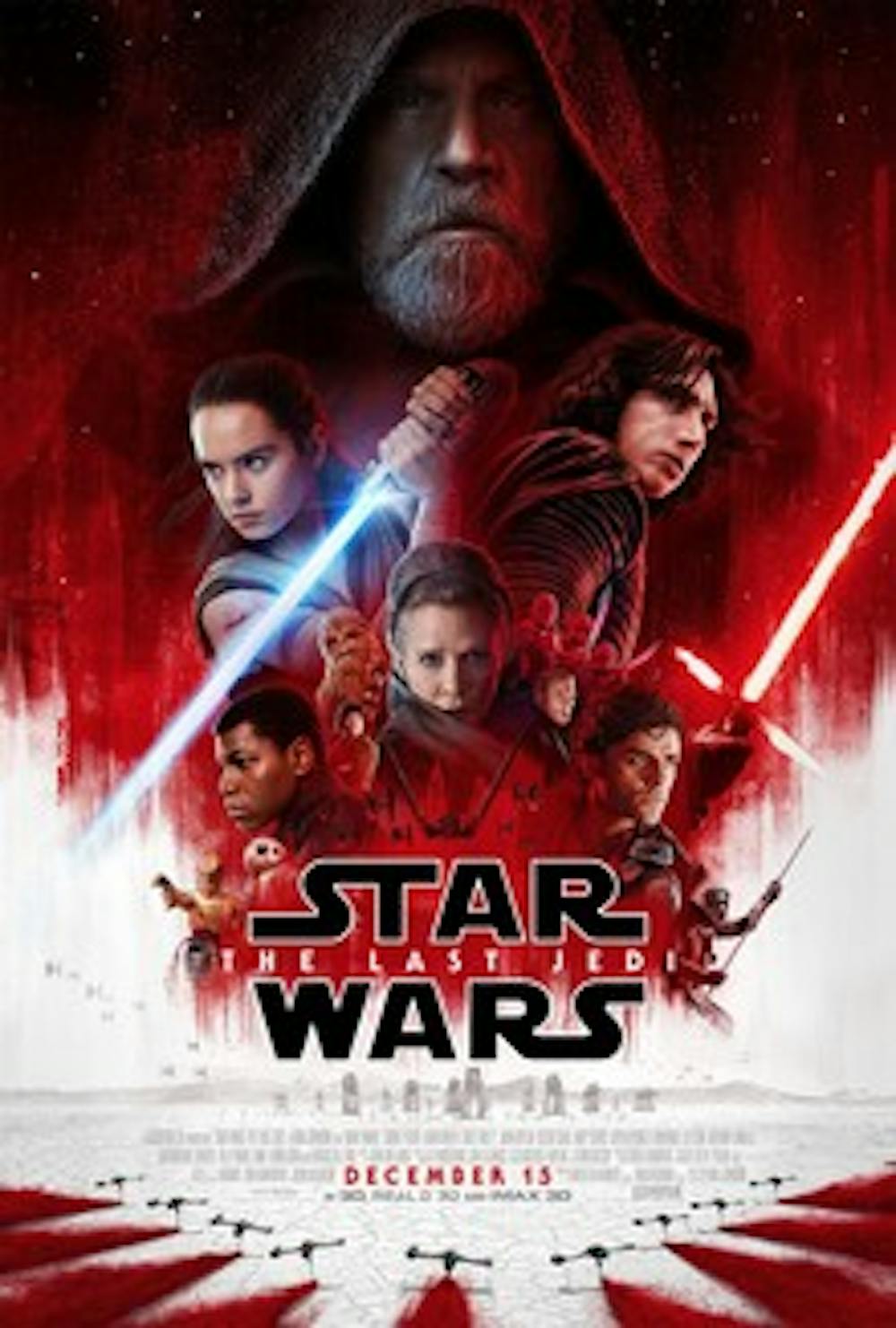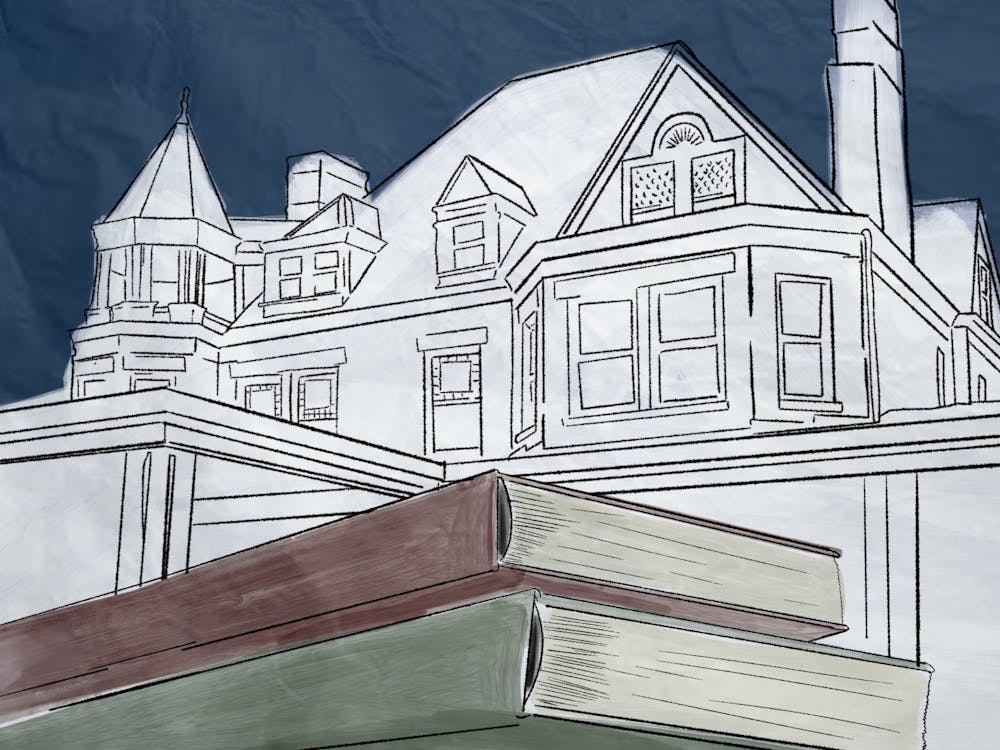Warning: The following review contains spoilers for “The Last Jedi.”
“It’s time for the Jedi to end,” declares the legendary hero Luke Skywalker, now grizzled in self-imposed exile on the remote island planet of Ahch-To. He’s a far cry from the hopeful Tatooine farm boy who believed not even Darth Vader to be beyond redemption — a change that’s made believable by Mark Hamill’s most impressive onscreen performance yet. Likewise, “The Last Jedi” is a “Star Wars” film that both acknowledges and consciously sheds the weight of its storied past, frequently upending the audience’s expectations.
Writer and director Rian Johnson — best known for helming dense neo-noir yarns like “Brick” and “Looper,” as well as some of the most tense “Breaking Bad” chapters — lends “The Last Jedi” both breathtaking thrills and genuine emotional depth. He’s not as interested in the cryptic, puzzle-box posturing that characterized J.J. Abrams’ direction of “The Force Awakens.” In fact, many of the previous film’s mysteries — such as the parentage of uncannily Force-sensitive scavenger Rey (Daisy Ridley) and the esoteric menace of the First Order’s Supreme Leader Snoke (Andy Serkis) — end up with starkly mundane resolutions.
Johnson’s choices may seem anticlimactic, but they underline the film’s wondrous and arguably radical willingness to question the definition of heroism and reckon with “Star Wars’” mythic foundations. When Luke initially refuses to train Rey as a Jedi, viewers recognize the story beat as a requisite refusal of the call, but the moment is also an opportunity to call attention to the Jedi’s failures as an institution; Vader might have chosen the Dark Side, but it was the Jedi Order — an organization accountable to no one — that trained him from youth to relentlessly suppress any possible doubts and emotions. Similarly, the clearest face of evil in this film is Kylo Ren (Adam Driver), a brooding, insecure manchild who clings to his grandfather’s legacy and the First Order’s fascistic conquest in order to lend his life purpose. While decidedly less impressive than Vader himself, he is no less dangerous.
“The Last Jedi’s” heroes also get to occupy an unexpected spectrum of valor. While Rey spends most of the film in pursuit of a greater connection with the Force, Finn (John Boyega) and Poe (Oscar Isaac) have to reckon with the more material threat of an advancing First Order fleet and the Resistance’s quickly dwindling resources. They’re joined by newcomers Rose Tico (Kelly Marie Tran) — an intrepid mechanic still mourning the loss of her pilot sister Paige (one-scene wonder Veronica Ngo) who sacrificed herself in a fiery inferno to destroy a First Order Dreadnought at the film’s start — and the regal, lavender-coiffed Vice Admiral Amilyn Holdo (Laura Dern).
Holdo’s no-nonsense leadership style clashes with Poe’s penchant for risky, loose-cannon daring, but the film emphasizes that the latter is useless without the former. A willingness to strategically cut one’s losses proves more valuable than the high-octane glamour of a single costly victory — an idea that often gets lost amidst the nonstop thrills of “Star Wars’” frenetic space dogfights.
Meanwhile, Finn and Rose are tasked with a clandestine mission to find a codebreaker on Canto Bight, which Rose scornfully refers to as “a terrible place filled with the worst people in the galaxy” — that is, a glittering Monte Carlo-esque casino city teeming with the well-dressed and filthy rich. Some viewers will likely deride the Canto Bight sequence as an extraneous plot detour, but it’s a richly imagined destination which provides a vital glimpse of what’s actually at stake for the Resistance. As it turns out, the one-percenters there have made fortunes from dealing arms to both sides of the ongoing galactic war. They bet on races between horse-like creatures called “fathiers,” who are abused by their owners and cared for by child slaves. The anti-establishment themes are hardly subtle, and they don’t need to be for viewers to care.
Here, the film makes it clear that evil takes form not just in the faceless, fanatical hatred of the First Order, but also in the banal greed and complicity of war profiteers. It’s as close to a direct indictment of the military-industrial complex that “Star Wars” has ever gotten; the fact that this is articulated by a newcomer to the canon — a character from an exploited mining planet played by a Vietnamese-American actress with refugee parents no less — makes the matter doubly resonant.
Up until this point, the “Star Wars” series has largely been a familial saga, with the Skywalker dynasty taking center stage like a galactic version of the House of Atreus. The audience has grown used to its thematic obsessions with lineage and the idea of anointed “chosen ones” destined to defeat evil. “The Last Jedi” is smartly willing to slice through those nostalgic expectations in order to forge a more hopeful path forward. The collapse of the old Jedi Order is not an irreparable tragedy, but instead a chance for a new generation to learn from its mistakes and rise up in its place.
Nonetheless, the film sometimes buckles under its own weight. For instance, the divergent nature of Rey, Finn and Poe’s respective storylines ends up sacrificing narrative unity for sheer scope. Johnson’s knack for stunning visual sequences often disguises disjointed pacing and counterintuitive character choices, like some borderline-contrived miscommunication between Poe and Holdo as well as an eleventh-hour kiss between Rose and Finn which feels faintly shoehorned in.
In spite of these missteps, however, “The Last Jedi” succeeds because it promises a revolution defined not simply by its never-ending battle against evil, but by its active willingness to make the galaxy a better and more empathetic place — whether that’s through an act as stunningly selfless and bombastic as tearing a ship clean through a First Order Star Destroyer at lightspeed or as casual as telling a story about a hero far, far away to some orphaned stable hands in order to give them hope.
In its final moments, the film returns to the stables of Canto Bight as the children giddily swap stories about Luke Skywalker’s legendary deeds — one of them sweeping a broom into his hand with the Force and gazing out at the incomprehensibly vast galaxy beyond. Viewers are reminded that the power of the Force isn’t limited to a rarefied and predetermined few, but rather is available to anyone who actively chooses to fight for justice. The spark belongs to anyone willing to take up the flame.





